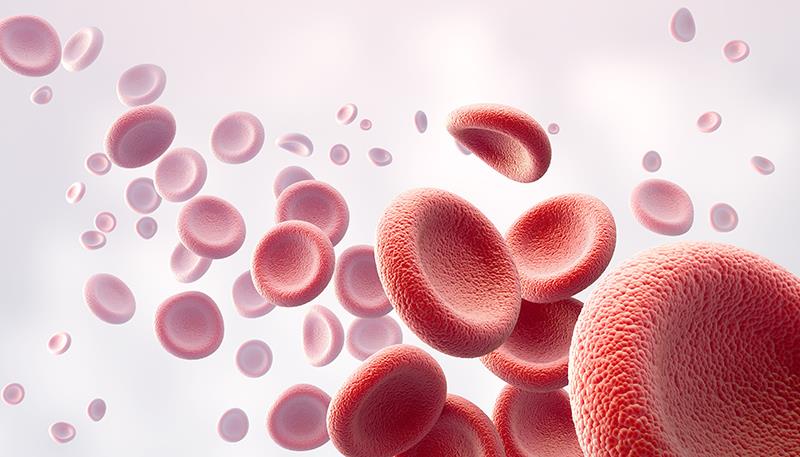Mitapivat breaks new ground as first potential Tx option for NTD thalassemia





Mitapivat, a first-in-class, oral, allosteric activator of pyruvate kinase (PK), breaks new ground in the global phase III ENERGIZE study, the first trial to demonstrate the potential of an oral treatment for both alpha- and beta-non-transfusion-dependent thalassemia (NTDT).
“Globally, there are currently no approved oral treatments for NTDT, which is characterized by anaemia, ineffective erythropoiesis, haemolysis, and iron overload, and can cause severe complications, reduced quality of life (QoL), and shortened lifespan,” said study investigator Dr Ali Taher from the American University of Beirut Medical Center, Beirut, Lebanon, in a news release. [https://investor.agios.com/news-releases/news-release-details/agios-presents-positive-results-phase-3-energize-study-mitapivat, accessed June 30, 2024]
“Based on the [ENERGIZE data,] mitapivat has the potential to become a foundational treatment for NTDT,” Taher said.
This could also augment mitapivat’s role in the haematology treatment field, as it is currently approved for treating haemolytic anaemia in adults with PK deficiency (PKD) in the US, and PKD in adults in the EU. [https://www.fda.gov/drugs/news-events-human-drugs/fda-approves-treatment-anemia-adults-rare-inherited-disorder, https://www.ema.europa.eu/en/medicines/human/EPAR/pyrukynd, accessed June 30, 2024]
Primary, key secondary endpoints met
Haemoglobin (Hb) response (≥1-g/dL increase in average Hb concentration from week 12 to 24 vs baseline) markedly improved with mitapivat vs placebo (42.3 percent vs 1.6 percent; ptwo-sided<0.0001). To put these rates into context, the 42.3-percent rate represents 55 mitapivat recipients, while the 1.6 percent only represents one patient in the placebo arm.
Mitapivat consistently trumped placebo across all prespecified subgroups, including thalassemia genotype (24 percent vs 0 percent [alpha] and 51 percent vs 2 percent [beta]) and baseline Hb concentration (47 percent vs 2 percent [≤9 g/dL] and 29 percent vs 0 percent [9.1–10 g/dL]).
There were also substantial improvements in the changes from baseline in average Hb concentration (0.86 vs -0.11 g/dL; least-squares mean [LSM] difference, 0.96 g/dL; ptwo-sided<0.0001) and average FACIT-Fatigue* score from week 12 to 24 (4.85 vs 1.46; LSM difference, 3.40; ptwo-sided<0.0026). [EHA 2024, abstract S104]
Markers of erythropoietic activity also improved with mitapivat vs placebo, as reflected by the changes in reticulocyte percentage (-1.59 percent vs -0.25 percent; LSM difference, -1.35 percent) and erythropoietin (19.21 vs 115.71 IU/L; LSM difference, -96.5 IU/L) from baseline to week 24.
A similar trend favouring the experimental drug was seen in terms of the changes in haemolysis markers from baseline to week 24 (-10.65 vs -0.03 µmol/L; LSM difference, -10.62 µmol/L [indirect bilirubin] and -30.07 vs -5.79 U/L; LSM difference, -24.28 U/L [lactate dehydrogenase]).
According to Taher, the improvements in the markers of erythropoietic activity and haemolysis aligned with the proposed mechanism of mitapivat. [Blood 2017;130:1347-1356; J Clin Invest 2021;131:e144206; Lancet 2022;400:493-501]
The incidence of any-grade treatment-emergent adverse events (TEAEs) was similar between the mitapivat and placebo arms (83 percent vs 79 percent). The most common TEAEs tied to mitapivat were headache, initial insomnia, nausea, and upper respiratory tract infection. “These were mostly transient and did not affect the patients’ [QoL],” Taher noted.
In the mitapivat arm, 6 percent had serious TEAEs, but none were deemed treatment-related. Four percent had grade ≥3 treatment-related TEAEs. There were low rates of TEAEs leading to drug discontinuation, dose reduction, and drug interruption (3, 5, and 2 percent, respectively).

May address all thalassemia subtypes
Taher and team randomized 194 participants (mean age 41 years, 63 percent women, median baseline Hb 8.4 g/dL, 68 percent with beta-NTDT) 2:1 to mitapivat 100 mg BID or placebo for 24 weeks. NTDT was defined as ≤5 red blood cell (RBC) units transfused 24 weeks prior to randomization and no RBC transfusions ≤8 weeks before informed consent or during screening.
“[The findings] are the first proof of efficacy of a disease-modifying therapy across the full range of NTDT,” said Taher. “Mitapivat may represent a new oral treatment option addressing both pathophysiology and health-related QoL in thalassemia.”
The phase III ENERGIZE-T study on mitapivat for adults with alpha- or beta-TDT also yielded positive results. With the data from both studies, filing for regulatory approval of mitapivat as treatment for thalassemia is in the offing.
“[The ENERGIZE data] are compelling, with mitapivat-treated patients achieving meaningful improvements in NTDT’s hallmark symptom of anaemia, as well as in key measures of how patients feel and function,” said Dr Sarah Gheuens, Agios chief medical officer and head of R&D, in the news release.
“Together with the recently announced positive results from ENERGIZE-T … the detailed ENERGIZE results underscore mitapivat’s potential to become an important treatment option for all subtypes of thalassemia – alpha and beta, TD and NTD – with the convenience of a pill,” Gheuens added.